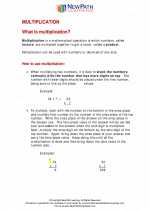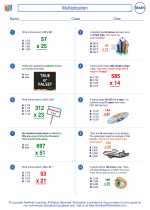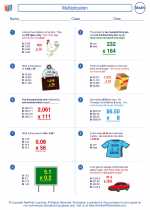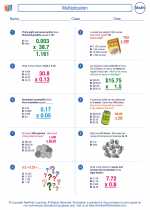Rational Functions
A rational function is a function that can be expressed as the quotient of two polynomial functions. In other words, it is a function of the form f(x) = P(x) / Q(x), where P(x) and Q(x) are polynomial functions and Q(x) is not equal to zero.
Key Concepts
- Numerator and Denominator: In a rational function, the polynomial in the numerator is called the numerator, and the polynomial in the denominator is called the denominator.
- Vertical Asymptotes: The vertical lines x = a where the function approaches infinity or negative infinity as x approaches a are called vertical asymptotes. These occur where the denominator is equal to zero.
- Horizontal Asymptotes: The horizontal line y = b where the function approaches b as x goes to positive or negative infinity is called a horizontal asymptote. The degree of the numerator and the denominator determine the behavior of the function at infinity.
- Domain and Range: The domain of a rational function is all real numbers except where the denominator is zero. The range is all real numbers except where the function hits a horizontal asymptote.
Example
Consider the rational function f(x) = (2x^2 + 3x - 2) / (x^2 - 4).
- Numerator and Denominator: The numerator is 2x^2 + 3x - 2 and the denominator is x^2 - 4.
- Vertical Asymptotes: The vertical asymptotes occur at x = 2 and x = -2, as these are the values that make the denominator zero.
- Horizontal Asymptotes: By comparing the degrees of the numerator and the denominator, we find that there is a horizontal asymptote at y = 2 (the leading coefficients of the numerator and denominator).
- Domain and Range: The domain is all real numbers except x = 2 and x = -2. The range is all real numbers except y = 2.
Study Guide
When studying rational functions, make sure to focus on the following key points:
- Understanding the definition of a rational function and being able to identify the numerator and denominator.
- Finding vertical and horizontal asymptotes and understanding how they affect the behavior of the function.
- Determining the domain and range of the rational function based on the behavior of the denominator and asymptotes.
Practice solving problems involving rational functions and familiarize yourself with graphing them to gain a deeper understanding of their behavior.
Remember to always check for simplification and cancellation opportunities when dealing with rational functions.
Good luck with your studies!
.◂Math Worksheets and Study Guides Sixth Grade. Multiplication
Study Guide Multiplication
Multiplication  Worksheet/Answer key
Worksheet/Answer key Multiplication
Multiplication  Worksheet/Answer key
Worksheet/Answer key Multiplication
Multiplication  Worksheet/Answer key
Worksheet/Answer key Multiplication
Multiplication 

 Worksheet/Answer key
Worksheet/Answer key
 Worksheet/Answer key
Worksheet/Answer key
 Worksheet/Answer key
Worksheet/Answer key

The resources above cover the following skills:
The Number System
Compute fluently with multi-digit numbers and find common factors and multiples.
Fluently multiply and divide multi-digit whole numbers using the standard algorithm. Express the remainder as a whole number, decimal, or simplified fraction; explain or justify your choice based on the context of the problem.